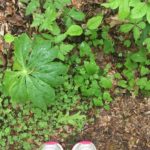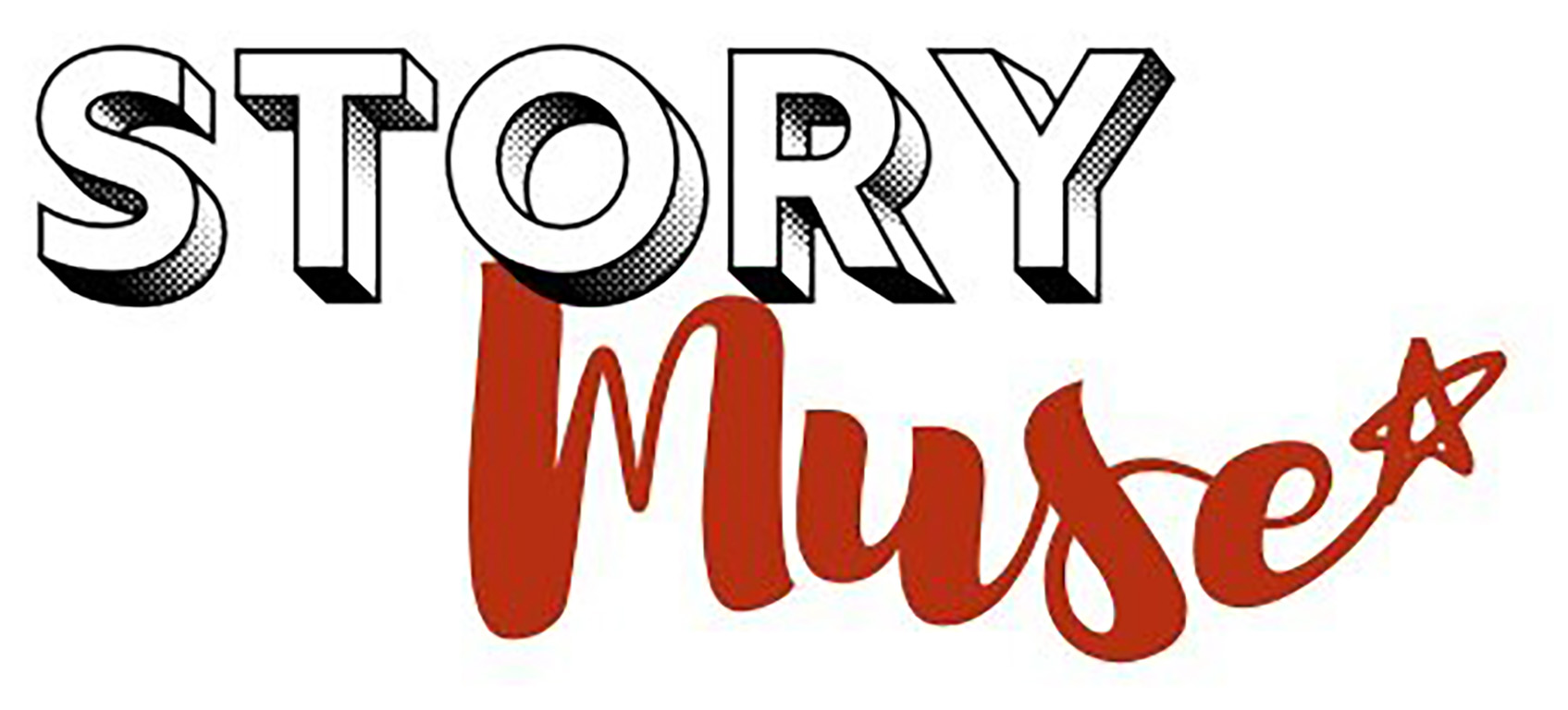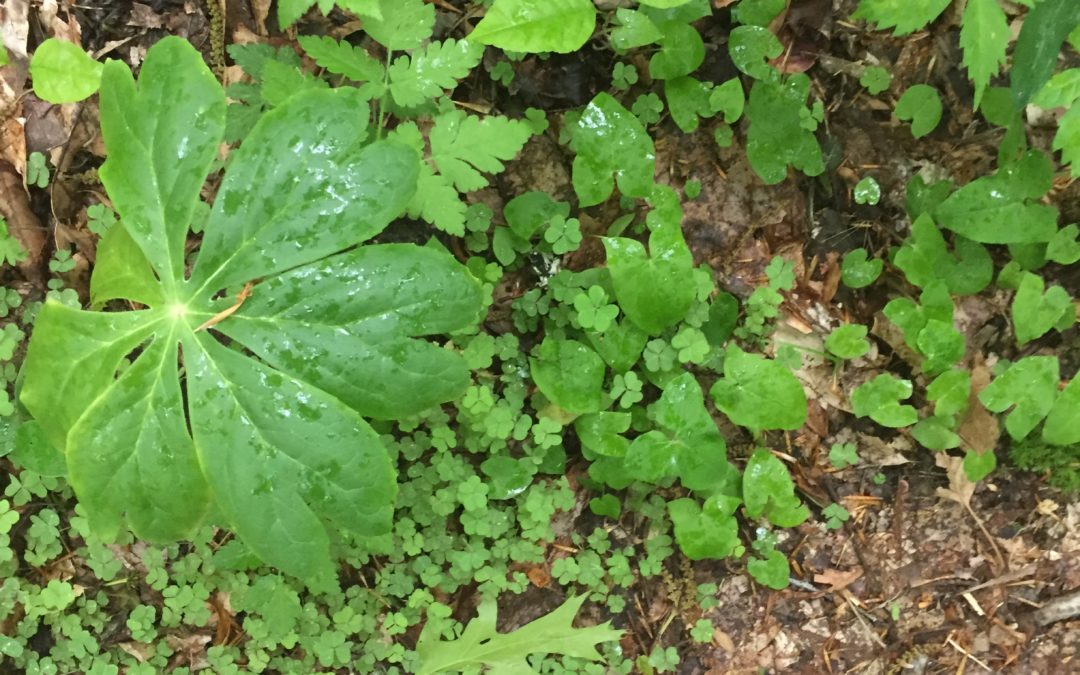
You remember what Blog Party means, right? In case not, here’s your friendly, neighborhood reminder. Next up is a great post from my friend, Lesley, whom I’ve known since my days in Blacksburg. Here’s how Lesley introduces herself:

I’m a lifelong fiction writer who’s half-way through a low-residency MFA at Warren Wilson College. I began my blog in 2011, when my sons were pre-teens–its focus was on writing amidst the chaos of family life. My (infrequent) posts have of late focused on writing craft and engaging the world through writing. You can read my blog, the Art of Practice, here.
Shades of Green and Shapes of Stories
It’s glorious spring in my neck of the woods, and the woods I walk my dogs in is bursting with all shades of green: emerald, jade, sea-foam, M&M, spearmint. And these greens come in all shapes and sizes, from mayapple to fern to clover to rambling rose to cottonwood saplings. Each different, each thicker in some parts of the woods than others: the mayapples tend to cluster where sunlight makes its way through the thickening canopy; the ferns seem to prefer darker slopes; the saplings dot the areas where an older tree has fallen—they need the light that’s available to them in those gaps.

And so it is with the forms that our stories may take: just as the majority of the plants in the woods are green, so many of our stories are made of words, words of all types: sacred, profane, Germanic, Latinate. And the form these stories take also varies: spoken word, poetry, creative nonfiction, drama, short story, novel.
I have been banging my head against the proverbial wall in regards to form for my writing: short stories are encouraged in the MFA program, I believe because getting a short story to “work” is a practice that can be applied to longer (and shorter) pieces of prose. But I’m only human, and I’ve worked with three- or five-act structure for years; I know Aristotle’s incline intimately, and Freytag’s triangle is my good friend. It’s like being in love with ranunculus or daisies and not noticing hyacinth and coral bells, and there’s nothing wrong with having a preference, for loving what we love.
For story structure, my love has been to include a fair amount of backstory. Last semester, while I floundered with a short story, my advisor suggested I get rid of all backstory and revise the story entirely in one scene. What?! No no no no my writer self hollered, I need backstory! At least a little bit!
I was wrong. Completely, totally, entirely wrong. When I cut out the backstory bits (carefully saving them in another file, because, well, because) the characters did and said everything necessary for the story in the present moment of the story. And in fact, once they were unencumbered by the backstory, they soared up and out and behaved in some startlingly interesting ways—the story blossomed.
Oh.
There are a gazillion ways to structure every piece of writing. OK, maybe not a gazillion. But more than three. How to become familiar with more than the major three? First learn the basics: Aristotle’s incline, Freytag’s triangle. There are all kinds of resources for this: Deepening Fiction by Sarah Stone & Ron Nyren. Imaginative Writing by Janet Burroway. The Practice of Creative Writing by Heather Sellers. In Priscilla Long’s The Writer’s Portable Mentor, page 19 has a wonderful jump-start process for an essay. Also Robert Ray’s The Weekend Novelist does a terrific job both teaching structure and providing the beginning writer with the scaffolding to complete the draft of a novel. And while learning, or reminding yourself, of the basics, read like mad. Take stories apart. Re-type them. It’s amazing how a writer’s process is revealed by simply re-typing their story. I’m doing it today with a chapter of Renata Adler’s Speedboat.
Because even if we love only some of the greens the world has to offer, our stories may demand that we expand our aesthetics. Writers are here to serve the stories that come to us, not cram them into the little boxes we’re familiar with.
Here’s to spring’s wild greeny excesses, its bounty of difference.
May your stories find their shape.

